Mill Race 2.0 Restoration 
The Freshwater Trust (TFT) is an Oregon-based non-profit organization with a mission to preserve and restore freshwater ecosystems. We are currently seeking new restoration projects like the one on Mill Race. If you own streamside land that is lacking shade trees, overgrown with blackberry, or otherwise would benefit from restoration of native trees and shrubs for local habitat, we’d love to talk to you. Learn more about the program here.
FAQ
The Mill Race River Mile 2.0 project is a streamside (or “riparian”) planting project on 1.7 acres along the Mill Race, a side channel of the Lower Middle Fork of the Willamette River, in Springfield, Oregon. The goal of this project is to generate shade along the streambank by establishing a healthy riparian forest. Shading the stream is important because solar radiation can warm the water too much for native cold-water fish such as salmon, trout and lamprey during critical times in their life cycles.
Healthy forests provide other benefits in addition to shade, such as erosion control, filtration of excess sediment and nutrients, and pollution reduction. These benefits go beyond the stream channel because mature forests look beautiful and provide wildlife habitat for animals that live along the river corridor.
The streambank trees and shrubs that you see were planted in 2013 with more than 3,000 native trees and shrubs of 13 different species. All plantings occurred on the bank opposite the bike path. The plantings on this previously unvegetated section of the Mill Race complemented a project completed in 2012 by the US Army Corps of Engineers and the City of Springfield that removed a mill pond dam, and recreated a stream channel, wetlands, and wet prairie habitat in its place.
Mill Race site one year after planting (2014):
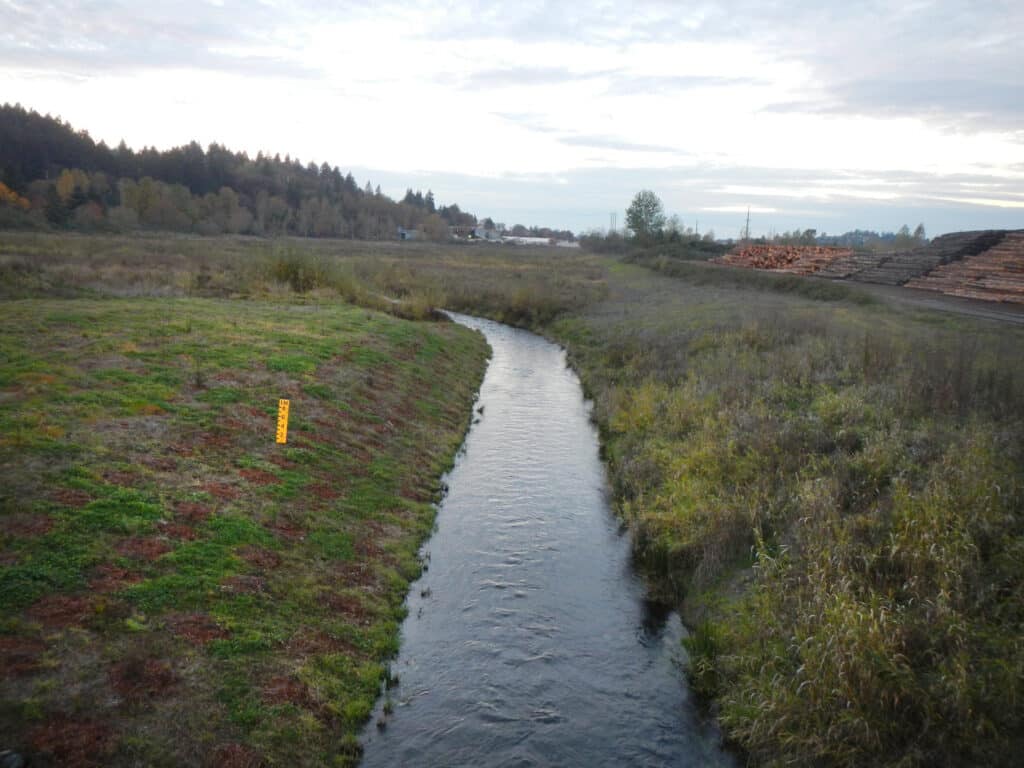
Mill Race site ten years after planting (2022):
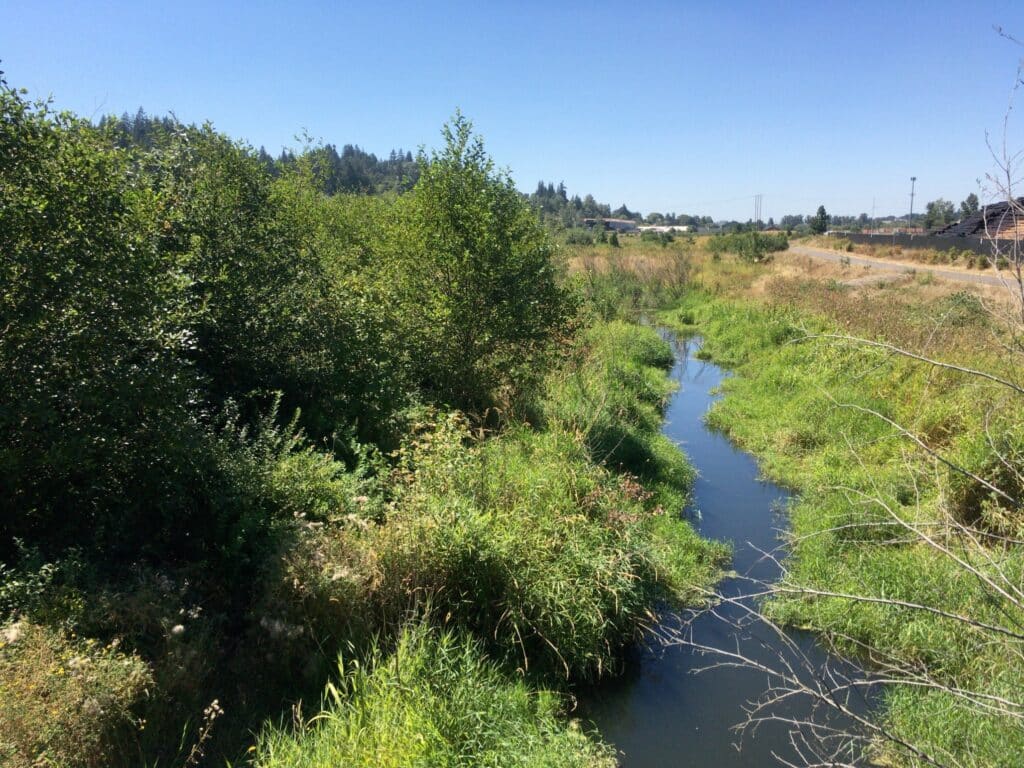
This area is home to an abundance of wildlife, including Spring Chinook, beaver, red-legged frogs, northwestern pond turtles and migratory birds. Deer and bald eagles have also been spotted in the area.
Trees planted here include Oregon ash, black cottonwood, white alder, red alder, cascara, Pacific willow, and others. Shrubs planted here include Oregon grape, redosier dogwood, Douglas spirea, common snowberry, oceanspray, twinberry, and several species of willow.
Native trees provide shade, while native shrubs protect the landscape from invasion by non-native plants and provide flowers for pollinators and berries that become food for wildlife. Certain species thrive by the water’s edge, while others are more drought-resistant and thrive in the upland. All these plants help to develop a dense, healthy, multi-story riparian forest.
Native cascara ready to be planted:
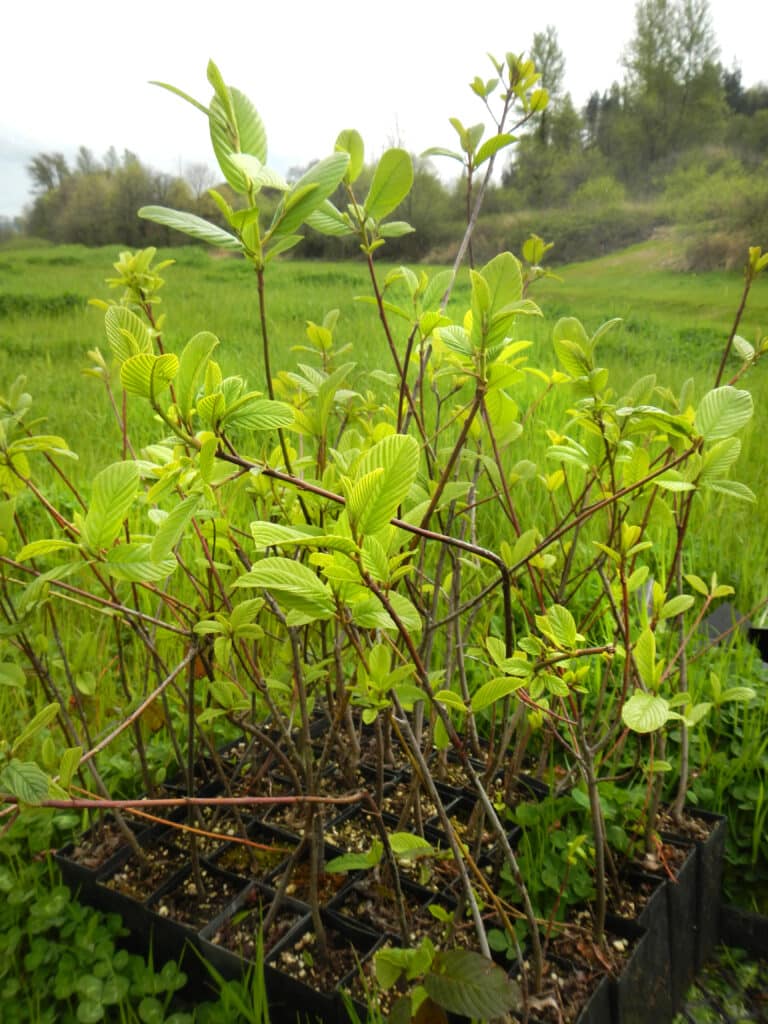
This site will be maintained for 20 years by The Freshwater Trust through the Metropolitan Wastewater Management Commission’s Water Quality Trading Program, which requires projects to meet defined performance standards. Stewardship includes reducing invasive weeds such as Himalayan blackberry, Canada thistle, yellow flag iris, and reed canarygrass from overtaking the project area. Because beaver are very active in this area, wire cages are placed around selected trees to reduce browse damage.
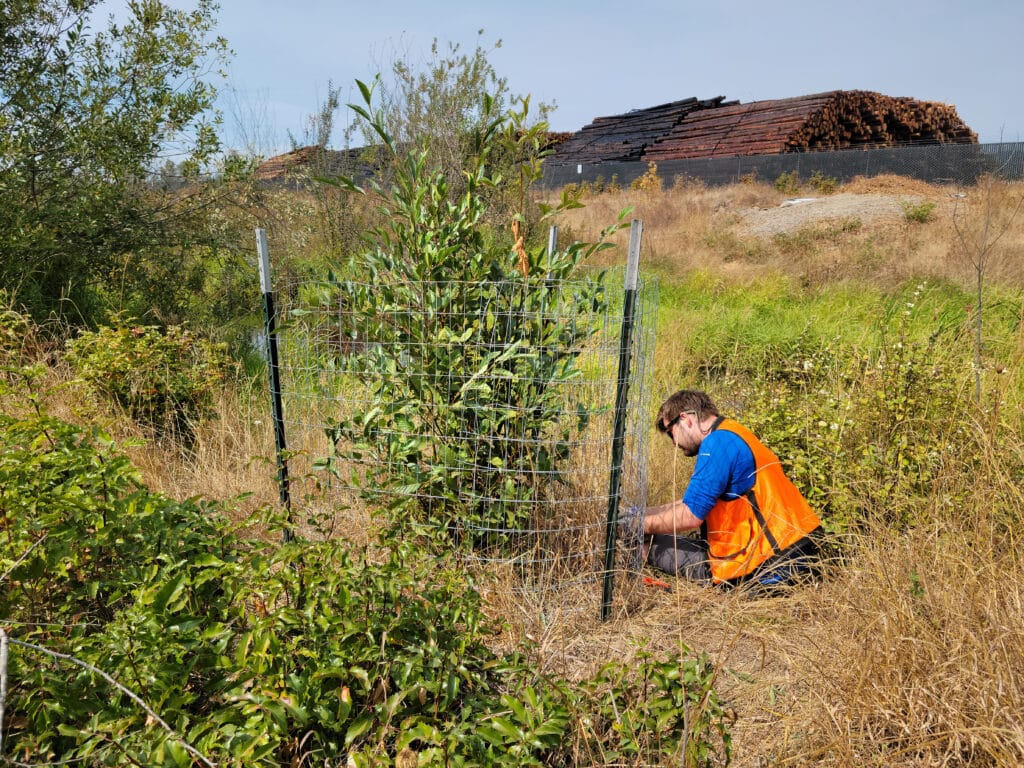
The Metropolitan Wastewater Management Commission of Eugene-Springfield (MWMC) and The Freshwater Trust are partnering to use shade produced from restoring streamside forests to help the utility meet its water quality goals. As the plants grow at each restored site, they block solar load (heat from the sun), which generates “shade (thermal) credits.” These “credits” benefit the MWMC and fish because the MWMC registers them with the Oregon Department of Environmental Quality to comply with a wastewater permit to protect water quality under the federal Clean Water Act, while fish get the benefit of cooler water in the streams.
The Freshwater Trust selects sites using its StreamBank® BasinScout® tool, which prioritizes many potential sites based on different environmental benefits. Sites throughout the Upper Willamette basin are modeled to quantify the amount of thermal benefit (shade) possible under restored conditions. This allows the team to locate the most high-impact planting sites and work with willing landowners to restore them.
The Freshwater Trust closely monitors this restoration project to ensure that it is on track to meet performance standards and to identify stewardship needs. Additionally, sites in the water quality trading program have independent third-party verifiers that confirm that the site is meeting its performance targets and generating the environmental benefits needed to comply with the wastewater permit requirements.
This project covers 1.7 acres on the south bank of the Mill Race.
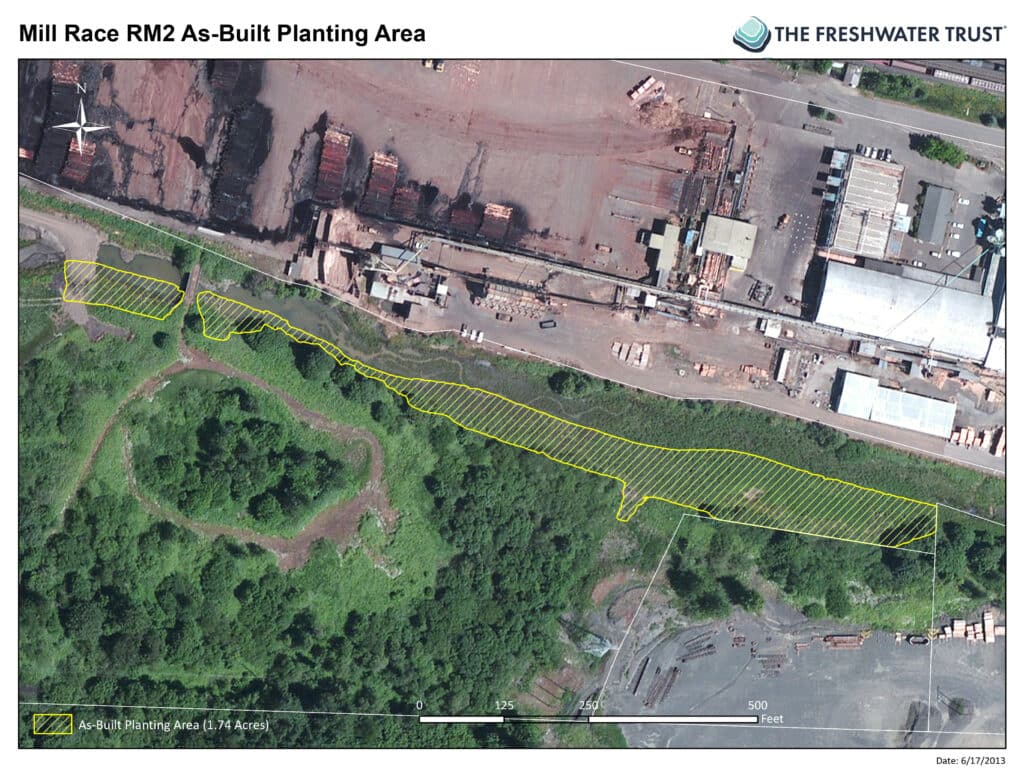
Get in touch
Have questions about restoration in the Upper Willamette watershed?
Alexis Graves, Restoration Program Coordinator
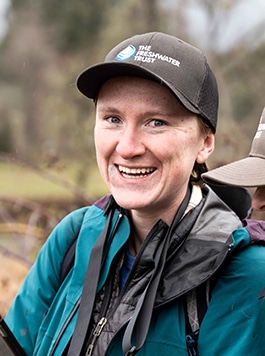
Contact Me At
Eugene Oregon
Email Alexis
